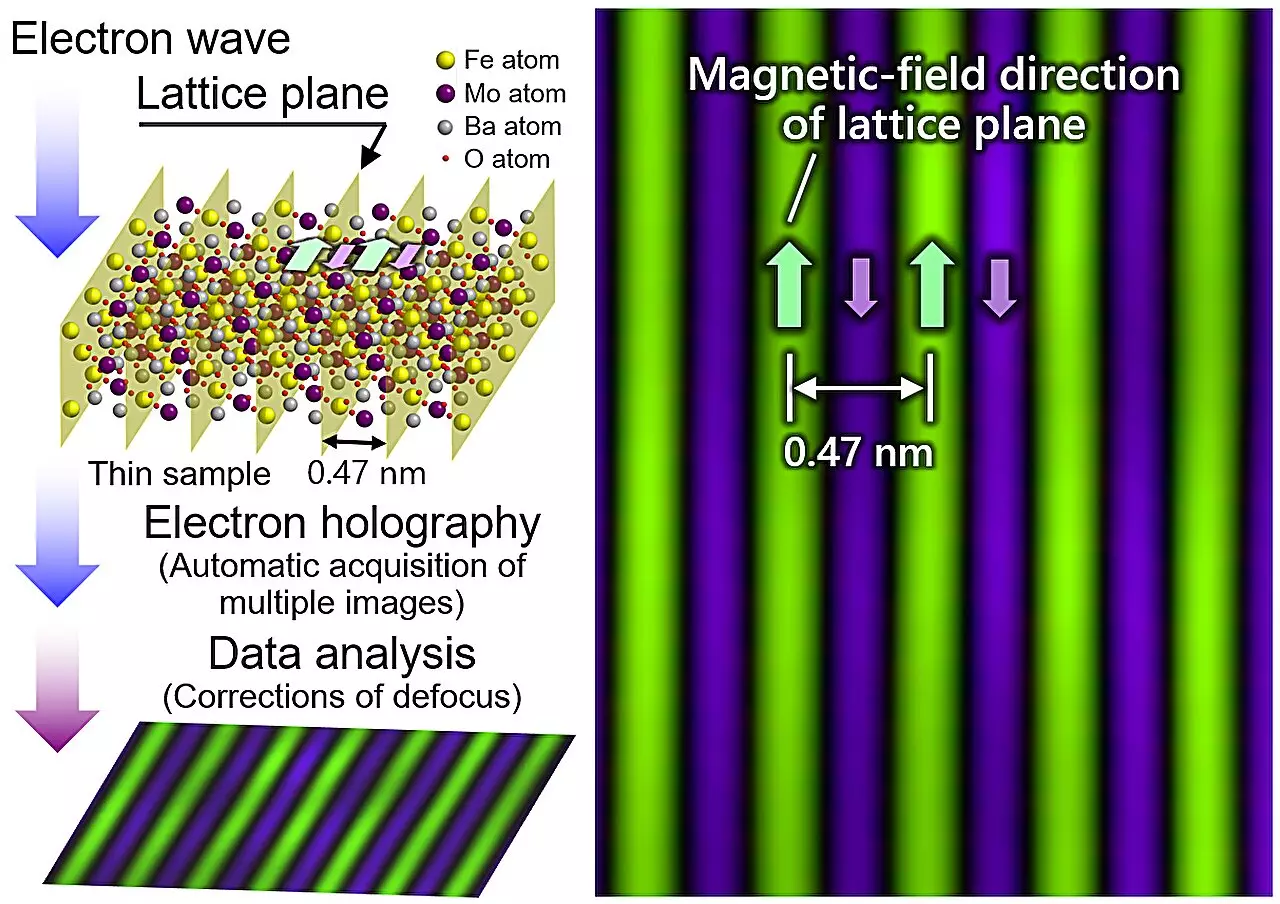The field of magnetic field observation at atomic levels has seen a major breakthrough with a research team from Japan achieving remarkable results. This team, comprised of scientists from Hitachi, Ltd., Kyushu University, RIKEN, HREM Research Inc., National Institute of Advanced Industrial Science and Technology (AIST), and the National Institute for Materials Science (NIMS), has successfully developed a new technique for visualizing magnetic fields at an unprecedented scale.
Previous limitations in observing magnetic fields at atomic layers have been overcome through collaborative efforts and technological advancements. The research team utilized Hitachi’s atomic-resolution holography electron microscope, along with newly developed image acquisition technology and defocus correction algorithms, to achieve groundbreaking results.
One of the key innovations in this research was the development of a system to automate the control and tuning of the device during data acquisition. This automation significantly sped up the imaging process, allowing for the acquisition of 10,000 images over 8.5 hours. By performing specific averaging operations with these images, the researchers were able to minimize noise and obtain clearer images containing distinct electric and magnetic field data.
Correction for Defocusing
Another significant challenge addressed by the research team was the correction for minute defocusing, which caused aberrations in the acquired images. By implementing a technique to correct for defocusing due to minor focus shifts, the resulting images were free of residual aberrations, making the positions and phases of atoms easily discernible with magnetic fields.
Through these innovations, the researchers were able to achieve an unprecedented resolution in observing the magnetic fields of atomic layers within a crystalline solid. By performing electron holography measurements on samples of Ba2FeMoO6, a layered crystalline material with distinct magnetic fields, the team surpassed the previously set record and observed the magnetic fields at a resolution of 0.47 nm.
The successful observation of magnetic fields at such small scales opens doors to direct observations of magnetic lattices in various materials and devices. This breakthrough is expected to have far-reaching implications in the fields of fundamental physics, next-generation devices, and the development of high-performance magnets and highly functional materials essential for decarbonization and energy-saving efforts. The team’s remarkable achievement marks the first step towards investigating veiled phenomena through electron spin configurations in magnetic materials.
The advancement in magnetic field observation at atomic levels represents a significant breakthrough with vast scientific and technological implications. The collaborative efforts and innovative techniques developed by the research team have paved the way for new discoveries and advancements in various fields, ultimately contributing to the realization of a carbon-neutral society.


Leave a Reply